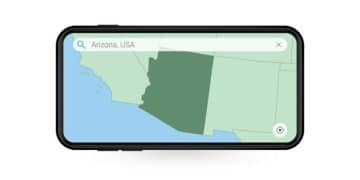Secure Your Social Media: 7 Privacy Settings You Need to Adjust Now

Securing your social media involves immediately adjusting seven key privacy settings: reviewing audience visibility, enabling two-factor authentication, managing third-party app permissions, controlling location sharing, curating ad preferences, limiting public search visibility, and understanding data retention policies.
In an increasingly interconnected digital world, ensuring the safety of your personal information on social media platforms is paramount. Taking proactive steps to secure your social media: 7 privacy settings you need to adjust now is not just a recommendation; it’s a critical Necessity to safeguard your digital footprint and maintain control over your online presence.
Understanding the Modern Privacy Landscape
The digital age has ushered in unparalleled connectivity, transforming how we interact, share, and consume information. While social media platforms offer incredible benefits for communication and community building, they also present significant challenges to personal privacy. The sheer volume of data processed, from profile information to interaction patterns, makes these platforms prime targets for data breaches, identity theft, and targeted manipulation. Understanding this evolving landscape is the first step toward effective self-protection.
The concept of privacy itself has become more fluid online. What was once considered private in the physical world often finds its way into public view or into the hands of data brokers in the digital realm. This necessitates a proactive approach from users, moving beyond passive acceptance of default settings to actively configuring their online environments. Digital literacy, particularly concerning privacy, is no longer a niche skill but a fundamental requirement for navigating the internet safely.
The Rise of Dataveillance
Dataveillance, the systematic monitoring of people’s actions or communications through electronic means for the purpose of controlling or influencing them, is a growing concern. Social media platforms, by their very nature, facilitate this. Every like, share, comment, and even the time spent viewing a post contributes to a vast profile of an individual. This profile, while ostensibly used to enhance user experience through personalized content and advertising, can also be exploited. This might involve anything from sophisticated phishing attempts to more insidious forms of manipulation based on revealed psychological vulnerabilities.
It is important to recognize that the business model of most social media giants relies heavily on data collection. This is not inherently malicious, but it does mean users must be vigilant. The balance between convenience and privacy often leans towards the former, placing the onus on the user to adjust settings to their comfort level. This includes understanding what data is collected, how it’s used, and who it’s shared with. Ignoring these aspects leaves one vulnerable to unforeseen consequences.
- Increased exposure to phishing and scams.
- Potential for identity theft from leaked personal information.
- Targeted advertising that can feel intrusive.
- Risk of unwanted contact or cyberstalking.
Ultimately, a comprehensive understanding of the modern privacy landscape empowers users to make informed decisions. It involves recognizing the inherent trade-offs between convenience and security, and taking deliberate steps to mitigate risks. This forms the foundation upon which specific privacy settings adjustments can be effectively implemented.
Setting 1: Reviewing Audience Visibility and Post Sharing Defaults
One of the most immediate and impactful adjustments you can make to secure your social media involves reviewing and controlling who sees your content. Default settings on many platforms often lean towards broader visibility, which might not align with your personal privacy preferences. Your posts, photos, and even your profile information can be exposed to a wider audience than you intend, potentially leading to unwanted attention or misuse of your data.
Start by scrutinizing the default audience for your posts. For example, on Facebook, new posts might automatically be set to ‘Public’ if you haven’t changed it. Similarly, Instagram accounts might be public, allowing anyone to view your stories and feed. It’s crucial to understand that even if your profile is private, certain elements might still be visible to a wider audience unless specifically restricted. This setting is often found under ‘Privacy’ or ‘Sharing’ options in the platform’s settings menu.
Adjusting Post-by-Post Visibility
Beyond global default settings, most platforms offer granular control over individual posts. This means you can decide, for each piece of content you share, who can see it. While it requires a bit more effort, this level of control is invaluable for sensitive information or personal moments you only wish to share with a select group. For instance, you might share a family photo only with ‘Friends’ or ‘Connections,’ while a comment on a public news article could remain public. Understanding these distinctions and habitually applying them can significantly enhance your privacy.
It’s also important to consider the implications of sharing to “friends of friends” or similar expanded networks. While seemingly innocuous, this can exponentially increase your content’s reach, making it viewable by individuals you don’t know directly and whose privacy practices you cannot ascertain. Always opt for the most restrictive audience that still allows your intended communication. Think of your online content as having varying levels of sensitivity, and adjust their audience accordingly.
- Facebook: Check ‘Who can see your future posts?’ setting and utilize post-specific audience selectors.
- Instagram: Toggle ‘Private Account’ to restrict non-followers from seeing your content.
- Twitter: Enable ‘Protect your Tweets’ to limit visibility to your approved followers.
- LinkedIn: Adjust ‘How others see your profile activity’ and ‘Visibility of your birthday’ settings.
Regularly auditing these settings, perhaps quarterly, is a good practice. Platforms frequently update their interfaces and default privacy options, potentially reverting your previous adjustments. A quick review ensures your content continues to reach only your intended audience, safeguarding your personal narratives from unintended viewership.
Setting 2: Enabling Two-Factor Authentication (2FA) for Enhanced Security
Even with strong, unique passwords, your social media accounts remain vulnerable to unauthorized access if a password is ever compromised. This is where two-factor authentication (2FA) steps in as a critical layer of defense. 2FA requires a second piece of information, in addition to your password, to verify your identity. This could be a code sent to your phone, a biometric scan, or a prompt from an authenticator app. Enabling 2FA is arguably one of the most effective steps you can take to secure your accounts from malicious actors.
Many social media platforms offer 2FA, but it is rarely enabled by default. You typically need to navigate to your account’s security settings to activate it. Once activated, even if someone obtains your password, they would still need access to your secondary verification method to log in, making it significantly harder for them to breach your account. This extra step acts as a powerful deterrent against a wide range of cyberattacks, including brute-force attempts and credential stuffing, where hackers use lists of compromised usernames and passwords from other breaches.
Choosing Your 2FA Method
Platforms often provide several 2FA options, each with varying levels of security and convenience:
SMS-based 2FA: This is the most common and easiest to set up, where a code is sent via text message to your registered phone number. While convenient, it’s considered less secure than other methods due to potential SIM swap fraud.
Authenticator apps: Apps like Google Authenticator or Authy generate time-sensitive codes. These are more secure than SMS because they don’t rely on cellular networks and are tied to the device, not the phone number.
Security keys: Physical security keys (like YubiKey) offer the strongest protection. They are small USB devices that plug into your computer or phone and confirm your identity with a single touch. These are immune to phishing and man-in-the-middle attacks.
- Always enable 2FA on all your primary social media accounts.
- Consider using authenticator apps over SMS for increased security.
- Explore physical security keys for ultimate protection on critical accounts.
- Keep recovery codes for 2FA in a safe, offline location.
The slight inconvenience of the extra step in logging in is a small price to pay for the significant boost in security that 2FA provides. It transforms your account from merely password-protected to virtually unhackable for most common attack vectors, making it an indispensable part of your social media security strategy.

Setting 3: Managing Third-Party App Permissions and Integrations
Many social media platforms allow third-party applications and services to integrate with your accounts. These integrations can offer convenient functionalities, such as games, quizzes, photo editing tools, or scheduling apps. However, these third-party apps often request broad permissions to access your data, and if not managed carefully, they can become significant privacy liabilities. Granting access to your profile, friends list, posts, or even private messages can expose your personal information to entities beyond the control of the social media platform itself.
It’s crucial to regularly review and revoke app permissions that you no longer use or that you deem to have excessive access. Over time, you might accumulate many integrated apps that you’ve long forgotten about. Each of these apps represents a potential vulnerability; if one of them suffers a data breach, your information on the connected social media account could be exposed. Additionally, some apps might share your data with other third parties for advertising or analytical purposes, often without your explicit knowledge or clear consent.
Conducting a Digital Audit of Connected Apps
Most social media platforms have a dedicated section in their settings that lists all connected apps and services. This is typically found under ‘Apps and Websites,’ ‘Connected Accounts,’ or ‘Third-Party Apps.’ Make it a habit to visit this section periodically, perhaps monthly or quarterly, to conduct a thorough audit. When reviewing each app, ask yourself the following questions:
- Do I still use this app?
- Is this app legitimate and trustworthy?
- Does this app really need all the permissions it’s requesting (e.g., access to my friends list if it’s just a photo editor)?
If the answer to any of these questions raises concerns, it’s best to revoke its access. Remember, you can always grant access again if you decide to use the app in the future. Prioritize revoking permissions from older, unused apps, as well as those that seem to request more data than necessary for their stated function. This proactive management significantly reduces your attack surface and limits the number of entities that have access to your valuable personal data.
Consider the cumulative risk: even if one app is benign, a collection of apps with broad access creates a larger target for attackers. Taking control of these permissions ensures that your data is only shared with trusted applications that genuinely require the access they are granted, adding a crucial layer to your social media privacy strategy.
Setting 4: Controlling Location Sharing and Geotagging
Location data is incredibly precise and can reveal a significant amount of information about your daily routines, home address, and places of frequent visitation. Social media platforms often have settings that allow or even default to sharing your location, either in real-time or by geotagging your posts with precise coordinates. While sharing your location can be convenient for check-ins or finding local friends, it also presents substantial privacy and safety risks. Malicious actors could use this information for targeted harassment, stalking, or even real-world theft if they know when you’re away from home.
It is paramount to review the location services permissions for each social media app on your device’s operating system (iOS or Android) and within the app’s settings. Ideally, location access should be set to ‘Never’ or ‘While Using the App’ only, and even then, with caution. Always consider whether a post truly benefits from having precise location data attached to it. For many casual shares, geotagging is unnecessary and adds an avoidable layer of risk to your personal security.
Disabling Geotagging and Location History
Beyond live location sharing, pay attention to geotagging features. Many social media apps automatically embed location data into photos and videos you upload. This metadata, often invisible to the casual viewer, can reveal exactly where a picture was taken. Browsing through your past posts for any inadvertently geotagged photos and, if possible, removing that data, is a smart move. Disabling this feature in your camera settings or within the social media app itself prevents future unintended disclosures.
Some platforms also maintain a “location history” or “places you’ve been” feature, which compiles a record of your movements. Reviewing and clearing these histories, if available, can further protect your privacy. Understanding that even posting a picture from a specific landmark can imply your current presence or recent visit to that location underscores the need for thoughtful sharing. The key is to be mindful of the information you’re inadvertently broadcasting about your physical movements and to limit it as much as possible for your personal safety.
The balance here is between social convenience and personal security. While sharing your location can enhance certain social interactions, the potential risks almost always outweigh the benefits for casual use. Taking control of these settings is a fundamental step in safeguarding your physical privacy in the digital age.
Setting 5: Curating Your Ad Preferences and Data Usage for Advertising
Social media platforms are largely ad-supported, and to deliver “relevant” advertisements, they collect vast amounts of data about your interests, online behavior, and demographic information. This data collection fuels the personalized ads you see, but it can also feel intrusive and raise concerns about how much information companies hold about you. While you might not be able to eliminate ads entirely, you can significantly curate your ad preferences and limit the data used for targeting, making your ad experience less invasive and boosting your overall privacy.
Most platforms offer detailed ad settings where you can see which ‘interests’ they have assigned to you, based on your activity, interactions, and profile information. You can often remove incorrect or unwanted interests, which helps refine the ads you see. More importantly, many platforms also allow you to toggle off specific data sources for advertising, such as your activity on third-party websites or information from data brokers. Taking the time to explore these options empowers you to have a say in how your data is monetized.
Understanding and Limiting Data Sharing for Ads
Beyond managing your ‘interests,’ pay close attention to settings that control whether social media platforms can use your data from outside their ecosystem for ad targeting. This includes information from advertisers who upload their customer lists, or data collected by tracking pixels on other websites you visit. Disabling these options restricts the platform’s ability to build a comprehensive profile of your activities both on and off their site specifically for advertising. This doesn’t mean you won’t see ads, but they will be less personalized and intrusive.
- Review and remove unwanted ‘interest categories’ assigned to you.
- Disable ‘ad personalization’ based on your activity off-platform.
- Opt out of advertisers using your data for custom audiences.
- Understand that opting out often means you’ll still see ads, just less relevant ones.
This is a continuous effort, as new ad features and data collection methods can be introduced. Regularly reviewing your ad settings ensures that your preferences remain up-to-date and that your data is used for advertising in a way that respects your privacy boundaries. It’s about taking back control of your digital identity, one preference at a time.
Setting 6: Limiting Public Search Visibility and Profile Discovery
Many social media platforms allow your profile to be discoverable through external search engines like Google, or through the platform’s internal search function by people who aren’t your direct connections. While this can be useful for networking or being found by friends, it also makes it easier for strangers, recruiters, or even malicious actors to access your public information. Limiting this public search visibility is a crucial step in controlling who can find and learn about you online, adding a layer of anonymity that can be beneficial for your overall privacy.
Check your privacy settings for options related to ‘Search Engine Visibility’ or ‘Who can look me up?’ Disabling these features prevents search engines from indexing your profile and appearing in search results. Similarly, limit how people can find you using your email address or phone number within the platform’s internal search, restricting discovery to only those with whom you’ve explicitly shared your contact information. This ensures that your social media presence is primarily for your chosen network, rather than a publicly accessible directory.
The Importance of Disconnecting Searchability
Even if your profile is set to ‘private,’ your name and profile picture might still appear in search results, giving potential snoopers enough information to try to connect with you or to piece together more information about you from other sources. By limiting public search visibility, you reduce the chances of unwanted connections or data aggregation about you. This is particularly important for individuals in professions that might attract unwanted attention, or simply for those who prefer a lower online profile. Remember that once data is public or indexable, it can be cached and reappear even after settings are changed, emphasizing the importance of getting these settings right from the start.
Consider the cumulative effect of your online presence. While one platform might seem innocuous, if multiple platforms allow your public discovery, it creates a more comprehensive digital footprint. Taking proactive steps to disconnect your social media profiles from public search engines significantly reduces your digital visibility and helps maintain a more controlled and private online persona.
Setting 7: Understanding Data Retention and Download Your Data Options
While the previous settings focus on preventing data leakage and controlling current sharing, understanding data retention policies and the ability to download your data empowers you to have a clearer picture of what social media companies store about you. Platforms collect vast amounts of information, from every post and comment to every search query and ad click. This data is retained for varying periods, often long after you’ve deleted a post or even deactivated an account. Knowing what they keep and for how long is fundamental to a comprehensive privacy strategy.
Many social media platforms now offer a ‘Download Your Data’ or ‘Access Your Information’ tool. This feature allows you to request a copy of all the data the platform has stored about you. This includes your posts, messages, photos, friend lists, logged-in locations, ad interests, and much more. Periodically downloading this data not only gives you insight into the breadth of information collected but also provides a personal backup of your digital history. It’s a tangible way to see what part of your digital life resides on their servers.
The Implications of Data Retention
Data retention has significant implications for your long-term privacy. Even if you delete a post, it might not be immediately purged from the platform’s servers, or it might be retained in backups for a certain period. This means that even deleted information could potentially be accessed through legal requests or in the event of a data breach. Furthermore, understanding the scope of data stored about you can inform future decisions about what you choose to share on these platforms.
- Regularly use the ‘Download Your Data’ feature to inspect your digital footprint.
- Understand platform data retention policies, especially for deleted content.
- Be aware that even deactivating an account might not delete all your past data immediately.
- Consider the long-term implications of everything you post, knowing it could be retained.
Armed with this knowledge, you can make more informed decisions about your online conduct. If a platform’s retention policies are too broad for your comfort, you might choose to limit what you share or seek out alternative platforms with more stringent privacy safeguards. Ultimately, exercising control over your data involves not only what you share in the present but also acknowledging and understanding its long-term digital lifecycle.

| Key Privacy Setting | Brief Description |
|---|---|
| 🔒 Post Visibility | Control who sees your content (e.g., Friends, Public). |
| 🔑 2FA Activation | Add an extra layer of login security beyond just a password. |
| 🔗 App Permissions | Review and revoke access for third-party applications. |
| 📍 Location Sharing | Disable geotagging and app access to your physical location. |
Frequently Asked Questions About Social Media Privacy
Social media privacy is crucial because these platforms collect vast amounts of personal data, making users vulnerable to identity theft, targeted harassment, and data breaches. Protecting this information safeguards your digital identity and prevents misuse of your personal life details by malicious actors or for unwanted commercial purposes.
It’s advisable to review your social media privacy settings at least quarterly, or whenever a platform updates its terms of service or introduces new features. Platforms frequently change default settings, so regular checks ensure your preferences remain intact and aligned with your current privacy needs, preventing unintended data exposure.
Yes, 2FA is highly necessary. It adds an essential layer of security by requiring a second verification method beyond your password. This significantly reduces the risk of unauthorized access even if your password is compromised, making it much harder for cybercriminals to breach your accounts and access your personal information.
No, you cannot completely stop social media platforms from collecting data as it’s integral to their operation and service delivery. However, you can significantly limit the types of data collected and how it’s used by adjusting privacy settings, disabling personalized ads, and controlling third-party app permissions. This minimizes your digital footprint.
Not disabling location sharing or geotagging poses several risks, including revealing your home address, daily routines, or vacation plans to strangers. This can lead to privacy invasions, physical stalking, or even real-world theft if criminals deduce when your home is vacant. It is crucial to limit location disclosure for physical safety.
Conclusion
The journey to a more secure and private social media experience is an ongoing one, but it is unequivocally worth the effort. By systematically addressing these seven critical privacy settings—reviewing audience visibility, enabling two-factor authentication, managing third-party app permissions, controlling location sharing, curating ad preferences, limiting public search visibility, and understanding data retention—you actively reclaim agency over your digital life. These adjustments move you from being a passive participant to an engaged guardian of your personal information, mitigating risks of exposure and misuse. In a world where our online presence increasingly defines us, taking deliberate steps to bolster your social media privacy is not merely a technical task, but a fundamental act of self-preservation and digital literacy. Prioritizing these settings ensures your online interactions remain beneficial, secure, and truly yours.





